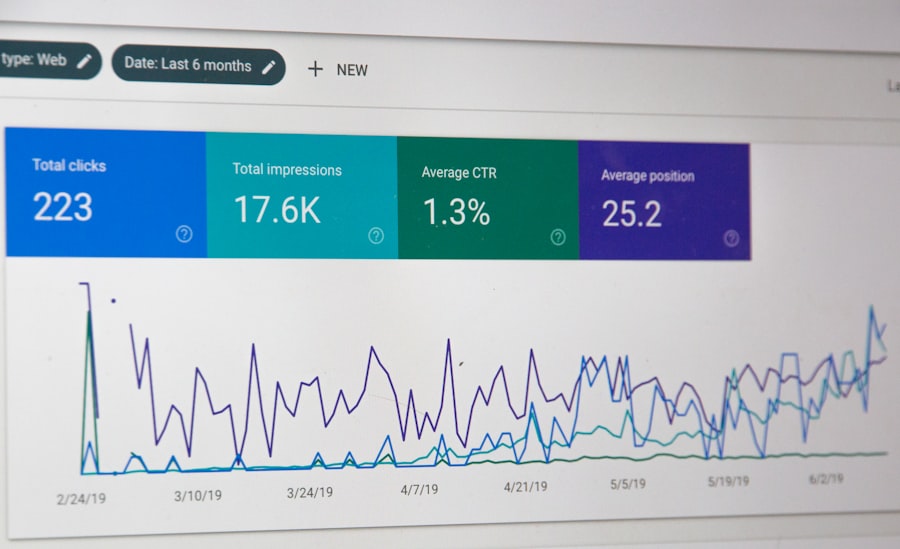In today’s data-driven world, the significance of database analytics in business cannot be overstated. Organizations are inundated with vast amounts of data generated from various sources, including customer interactions, sales transactions, and market trends. This data, when effectively analyzed, can provide invaluable insights that inform strategic decision-making and enhance overall business performance.
Database analytics serves as a powerful tool that enables companies to sift through this information, identify patterns, and extract actionable intelligence. By leveraging these insights, businesses can not only improve their operational processes but also gain a competitive edge in their respective markets. Moreover, the importance of database analytics extends beyond mere data collection; it encompasses the ability to transform raw data into meaningful narratives that drive business strategies.
Companies that invest in robust analytics capabilities can better understand their market positioning, customer preferences, and emerging trends. This understanding allows them to tailor their products and services to meet the evolving needs of their clientele. In essence, database analytics acts as a compass for organizations navigating the complexities of modern commerce, guiding them toward informed decisions that foster growth and sustainability.
Key Takeaways
- Database analytics is crucial for businesses to gain insights from their data and make informed decisions.
- By leveraging database analytics, businesses can drive growth through targeted marketing, improved customer retention, and operational efficiency.
- Database analytics helps in better decision making by providing real-time and accurate data for analysis and forecasting.
- Understanding customer behavior through database analytics allows businesses to personalize their offerings and improve customer satisfaction.
- Database analytics can improve operational efficiency by identifying areas for optimization and streamlining processes.
How Database Analytics Can Drive Business Growth
Database analytics plays a pivotal role in driving business growth by enabling organizations to identify new opportunities and optimize existing processes. By analyzing historical data, businesses can uncover trends that may indicate potential areas for expansion or improvement. For instance, a retail company might analyze sales data to determine which products are performing well in specific regions, allowing them to allocate resources more effectively and target marketing efforts where they are likely to yield the highest returns.
This targeted approach not only maximizes revenue but also enhances customer satisfaction by ensuring that the right products are available at the right time. Furthermore, database analytics empowers businesses to make data-driven decisions that minimize risks associated with growth initiatives. By employing predictive analytics, organizations can forecast future trends based on historical data, enabling them to anticipate market shifts and adjust their strategies accordingly.
For example, a manufacturing firm might use analytics to predict demand fluctuations for its products, allowing it to optimize inventory levels and production schedules. This proactive approach not only reduces costs associated with overproduction or stockouts but also positions the company as a responsive player in its industry, ultimately driving sustainable growth.
Leveraging Database Analytics for Better Decision Making

The ability to leverage database analytics for better decision-making is one of the most significant advantages it offers to businesses. In an environment where decisions must be made quickly and accurately, relying on intuition alone can lead to costly mistakes. Database analytics provides a solid foundation for decision-making by offering insights derived from comprehensive data analysis.
By utilizing advanced analytical tools, organizations can evaluate various scenarios and outcomes based on real-time data, ensuring that their decisions are grounded in factual evidence rather than speculation. Moreover, the integration of database analytics into decision-making processes fosters a culture of accountability within organizations. When decisions are backed by data, it becomes easier to track performance metrics and assess the effectiveness of various strategies.
This transparency not only enhances trust among stakeholders but also encourages continuous improvement as teams can learn from past decisions and refine their approaches over time. As a result, businesses that embrace database analytics are better equipped to navigate uncertainties and capitalize on opportunities with confidence.
Understanding Customer Behavior through Database Analytics
| Metrics | Description |
|---|---|
| Customer Segmentation | Dividing customers into groups based on characteristics such as behavior, demographics, and purchasing patterns. |
| Customer Lifetime Value (CLV) | The predicted net profit attributed to the entire future relationship with a customer. |
| RFM Analysis | Segmenting customers based on their recency, frequency, and monetary value of their purchases. |
| Churn Rate | The percentage of customers who stop using a product or service within a given time period. |
| Customer Retention Rate | The percentage of customers that a company has retained over a specific period of time. |
Understanding customer behavior is crucial for businesses aiming to enhance their offerings and improve customer satisfaction. Database analytics provides a wealth of information about customer preferences, purchasing habits, and engagement patterns. By analyzing this data, organizations can segment their customer base into distinct groups based on shared characteristics or behaviors.
This segmentation allows businesses to tailor their marketing strategies and product offerings to meet the specific needs of each group, ultimately leading to increased customer loyalty and retention. Additionally, database analytics enables companies to track changes in customer behavior over time. By continuously monitoring interactions and feedback, businesses can identify emerging trends and adapt their strategies accordingly.
For instance, if data reveals a growing preference for online shopping among a particular demographic, a retailer can enhance its e-commerce platform or develop targeted online marketing campaigns. This agility in responding to customer needs not only strengthens relationships but also positions businesses as leaders in customer-centric innovation.
Improving Operational Efficiency with Database Analytics
Operational efficiency is a critical factor in determining a business’s success and profitability. Database analytics plays a vital role in identifying inefficiencies within organizational processes and providing insights for improvement. By analyzing operational data, companies can pinpoint bottlenecks, redundancies, and areas where resources may be underutilized.
For example, a logistics company might use analytics to assess delivery routes and times, allowing them to optimize their supply chain operations and reduce costs associated with fuel consumption and labor. Furthermore, database analytics facilitates continuous monitoring of key performance indicators (KPIs), enabling organizations to make real-time adjustments to their operations. By establishing dashboards that visualize performance metrics, businesses can quickly identify deviations from expected outcomes and implement corrective actions as needed.
This proactive approach not only enhances operational efficiency but also fosters a culture of accountability among employees who are empowered to take ownership of their performance metrics. Ultimately, leveraging database analytics for operational improvements leads to increased productivity and profitability.
The Role of Database Analytics in Predictive Modeling

Predictive modeling is an essential aspect of database analytics that allows businesses to forecast future outcomes based on historical data patterns. By employing statistical algorithms and machine learning techniques, organizations can create models that predict customer behavior, market trends, and operational performance. This capability is particularly valuable in industries such as finance, healthcare, and retail, where understanding future scenarios can significantly impact strategic planning and resource allocation.
The role of database analytics in predictive modeling extends beyond mere forecasting; it also enables organizations to test various scenarios and assess potential risks associated with different strategies. For instance, a financial institution might use predictive models to evaluate the likelihood of loan defaults based on historical borrower data. By understanding these risks in advance, the institution can make informed lending decisions and develop targeted risk mitigation strategies.
As predictive modeling continues to evolve with advancements in technology, its integration into business practices will become increasingly vital for maintaining competitiveness in dynamic markets.
Overcoming Challenges in Implementing Database Analytics
While the benefits of database analytics are clear, implementing these systems within an organization is not without its challenges. One significant hurdle is the need for skilled personnel who can effectively analyze data and interpret results. Many organizations struggle to find qualified data analysts or data scientists who possess the necessary technical expertise and business acumen.
This skills gap can hinder the successful adoption of database analytics initiatives and limit the potential benefits that could be realized. Additionally, organizations often face challenges related to data quality and integration. In many cases, data is stored across multiple systems or formats, making it difficult to consolidate and analyze comprehensively.
Poor data quality—such as inaccuracies or inconsistencies—can lead to misleading insights that ultimately undermine decision-making efforts. To overcome these challenges, businesses must invest in training programs for their staff while also prioritizing data governance practices that ensure high-quality data collection and management processes.
The Future of Database Analytics in Business Intelligence
As technology continues to advance at an unprecedented pace, the future of database analytics in business intelligence looks promising yet complex. Emerging technologies such as artificial intelligence (AI) and machine learning are set to revolutionize how organizations analyze data and derive insights. These technologies will enable more sophisticated analytical capabilities that can process vast amounts of data in real-time, providing businesses with immediate access to critical information needed for decision-making.
Moreover, the increasing emphasis on data privacy and security will shape the future landscape of database analytics. As regulations surrounding data protection become more stringent, organizations will need to adopt robust security measures while still harnessing the power of analytics. This balance between leveraging data for insights and ensuring compliance with privacy standards will be crucial for maintaining customer trust and safeguarding sensitive information.
Ultimately, the evolution of database analytics will continue to play a central role in shaping business intelligence strategies as organizations strive to remain agile and competitive in an ever-changing marketplace.
If you’re interested in learning more about database analytics and how it can be applied in various sectors, you might find the article on xosap.top quite enlightening. This resource provides a comprehensive overview of database analytics, discussing its importance, methodologies, and the impact it has on business decision-making. Whether you’re a beginner or an experienced professional, this article offers valuable insights that can enhance your understanding and application of database analytics in your projects.
FAQs
What is database analytics?
Database analytics refers to the process of analyzing and interpreting data stored in a database to uncover insights, trends, and patterns that can be used to make informed business decisions.
What are the benefits of database analytics?
Database analytics can help businesses improve operational efficiency, identify new opportunities, optimize marketing strategies, and enhance customer experiences. It can also aid in detecting and preventing fraud, as well as improving overall decision-making.
What are the key components of database analytics?
The key components of database analytics include data collection, data storage, data processing, data analysis, and data visualization. These components work together to turn raw data into actionable insights.
What are some common techniques used in database analytics?
Common techniques used in database analytics include data mining, predictive modeling, machine learning, and statistical analysis. These techniques help in uncovering patterns and relationships within the data.
What are some popular tools for database analytics?
Popular tools for database analytics include SQL Server, Oracle Database, MySQL, PostgreSQL, MongoDB, and Apache Hadoop. Additionally, there are various business intelligence and analytics platforms that offer database analytics capabilities.
How is database analytics different from traditional business intelligence?
Database analytics focuses on analyzing data stored in a database to derive insights, while traditional business intelligence typically involves reporting and querying of data. Database analytics often involves more advanced techniques such as predictive modeling and machine learning.
